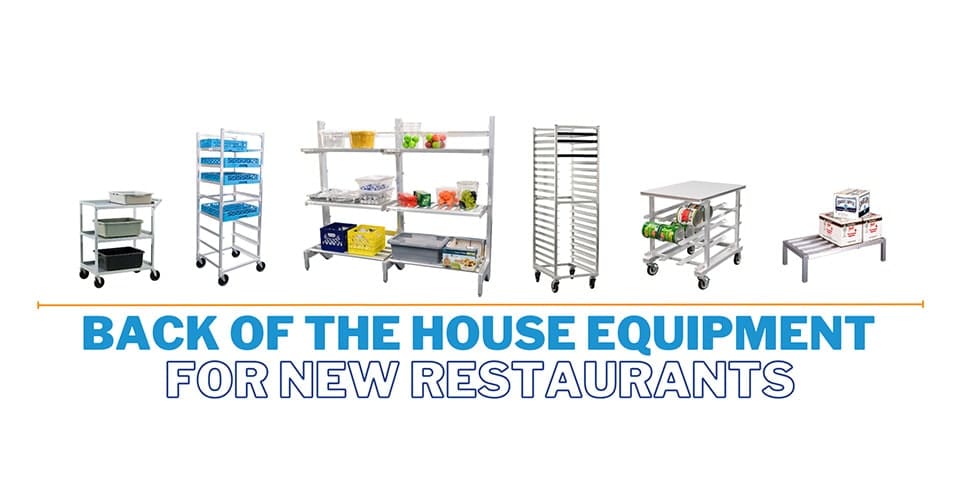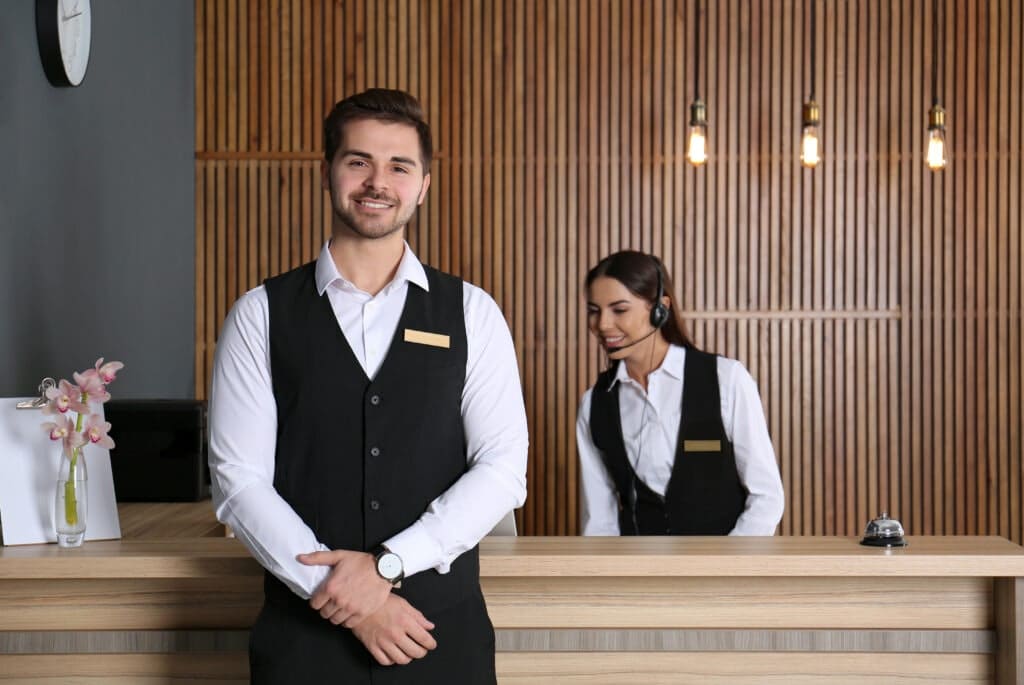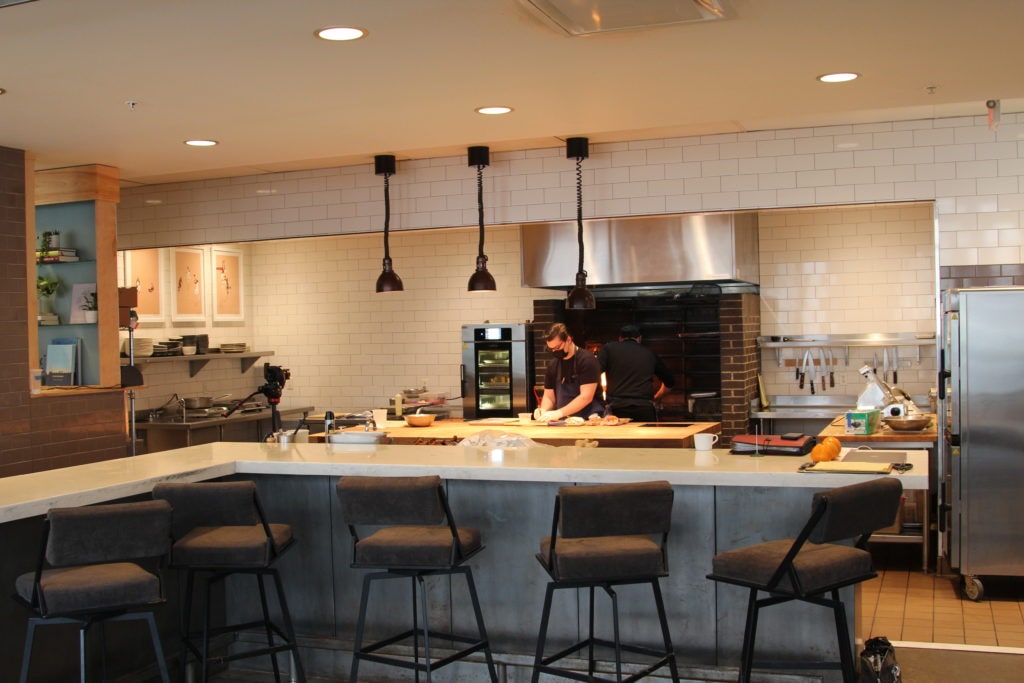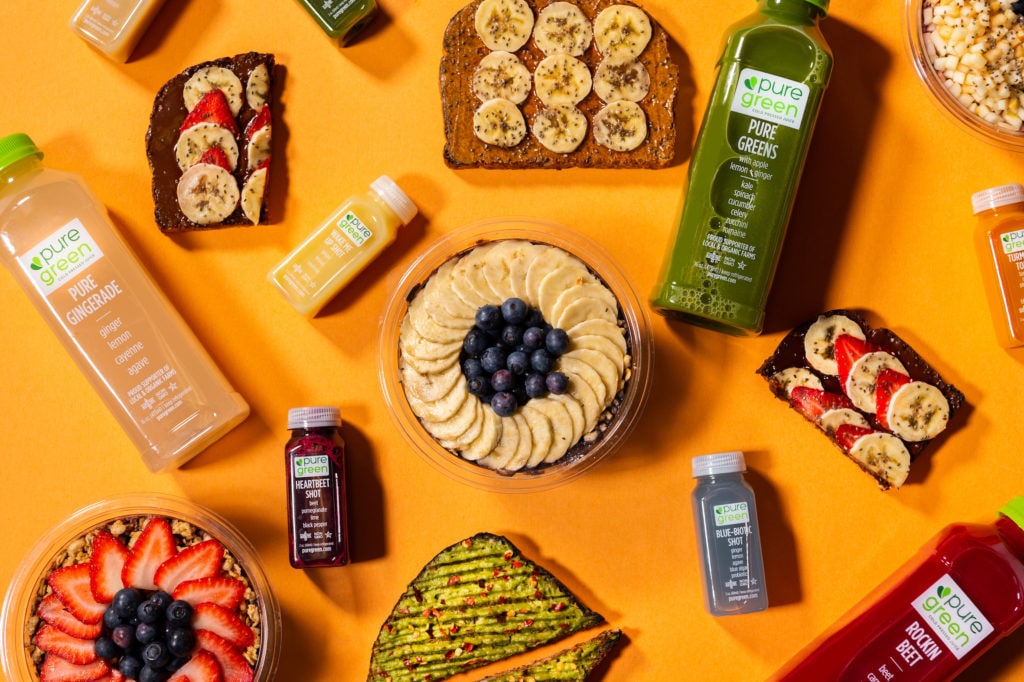Remember Kermit the Frog’s theme song? ‘It’s not easy being green’ could equally serve as the signature song for operators trying to create a truly sustainable restaurant.
One might argue that it’s in an operator’s own best interest to exchange energy guzzling equipment for energy efficient alternatives, but the decision making process isn’t always that simple. Sustainable building material and energy efficient equipment is more readily available than ever before, but there may be an upfront cost – offset over time – which can prove a deterrent.
The issue always comes down to a simple question: Can a sustainably built restaurant repay the cost of building it? In Canada, a small group set out to not only prove it could, but to provide the exemplar for sustainability. B.C. Hydro (British Columbia’s electricity provider), The Green Table Network, and the California-based Foodservice Technology Center partnered with the Listel Hotel in Vancouver, BC, to create Canada’s newest and most energy efficient restaurant, Forage.
It’s not simply the solar panels on the roof or the Forest Stewardship Council (FSC)-certified woods creating a warm, welcoming interior. It’s more than water conservation systems and waste management methodologies. Those features earn LEED (Leadership in Energy Efficient Design) points and they offer ample opportunities for positive public relations. After all, being seen to ‘do good’ is becoming increasingly important and can draw customers in.
It has worked remarkably well for Slowpoke Espresso Café in Melbourne, Australia. Timber off-cuts create complex patterns on the wooden wall. Recycled floorboards form the tabletops, and most of the interior’s accoutrements – from tiles to lamp shades – come from neighbourhood flea markets. The signs are powered by a solar panel atop a recycled wooden toolbox. And their business cards are made from hand-cut recycled cardboard packaging. Whether it’s the sustainable message or the good food, Melbourne diners have taken this spot to their collective hearts.
Thousands of miles away in UK, Tim Bouget, owner of ODE restaurant and its newer little sister, ODE café, has found the same success taking sustainability to new heights. The winner of the Most Sustainable Restaurant award in 2013 from the Sustainable Restaurant Association, ODE does it all – from solar panel and sedum roof (to encourage biodiversity) to locally sourced recycled materials for interiors, kitchens and wares; from induction cooking to save energy to purchasing that energy from 100% renewable sources. Its motto is Good food that doesn’t cost the earth.
“It’s important to us that we send almost nothing into landfill and have as small a footprint as possible,” says Bouget. “It costs more but we will get it back in the long run.” ODE has taken advantage of government sustainability programs and recently applied for the Renewable Heat Incentive (the cafe is heated with a recycled wood burner).
In fact, says Mark Linehan, managing director of the Sustainable Restaurant Association, operators around the world need to look around and see what their governments offer in the way of incentives – tariff returns, subsidies and programs like Britain’s Enhanced Capital Allowance (ECA) that allows operators to claim back part or all of the taxes paid on energy savers. “Virtually everyone has these in some form but they are often missed. They can shorten the payback time on the cost of sustainable features,” he explains. “Even features like lighting and shades can attract ECA.”
What about the back of house?
Most equipment producers are developing greener, cleaner, energy-smart machines. At Forage, equipment such as energy efficient induction griddles, fryers and gas steamers, and an on-demand ventilation system are already contributing to energy savings. Turbo pots save energy and improve cooking efficiency. In fact, says Don Fisher, president of Fisher-Nickel Inc., who operates the Foodservice Technology Center, the acknowledged global leader in energy efficiency testing and promotion, “Turbo pots are so much more effective, I don’t know why more people aren’t using them.”
Just six months old, Forage is already on track to reduce energy consumption by at least 30 per cent – a savings of 120,000 KW hours of electricity (enough to power 11 homes for an entire year!) and 390 Gigajoules of natural gas (enough to power 10 homes for one year).
So why don’t all consultants spec this equipment?
There appears to be two main reasons. “There’s a common misconception that energy efficient equipment somehow compromises performance, as if it were throttling down the power,” says Fisher. “If the standard input is 120 BTUs and the efficient equipment uses 80 BTUs, operators think in terms of less horsepower. What they don’t realize is that those additional 40 BTUs are just going up the flue.”
The second reason is pragmatic. “Using recycled materials or FSC chairs don’t contribute to the bottom line, but it’s worth LEED points and can be a huge marketing advantage,” says Pamela Eaton, FCSI, a US consultant who specialises in LEED projects. “On the other hand, although it can return the investment within three years, energy efficient foodservice equipment isn’t worth points. Unfortunately, the person making the final decision on that equipment, may be more interested in construction costs and equipment becomes an afterthought.”
Fisher agrees. “Foodservice seems to have the idea that you need payback within a year. The payback on energy efficient equipment may take three years but remember, that’s still 30% savings in the first year!” However, in an industry where one in five restaurants fails in the first year, adds Eaton, owners want quick ROI.
Sadly, when everyone isn’t on the same page from the outset, decisions may get based on such short-term gain. Instead, when it gets to the stage of selecting equipment, energy conservation should be a given. “Today’s professional kitchen has a wider selection of equipment to address the specific preparation and menu needs as well as regulatory compliance with areas such as hygiene and food safety,” says Tim Smith, CEO of UK-based The AFE Group Ltd. “Sustainability is an integral part of each and every stage of the investment decision, planning and operation.”
André LaRivière, founder of Canada’s Green Table Network which helps restaurants like Forage to be more sustainable, suggests that not enough restaurants take a step back before acquiring equipment. “They need to look at the menu – from ingredient sourcing to prep and serving style. For example, farm to table may require extra processing space. At Forage, we oriented the prep line to be able to deal with seasonal produce as it arrived, without interrupting the flow of work in the kitchen.”
Equipment such as vacuum pack machines and an efficient steam kettle help to extend the season with sauces, preserves, compotes, etc. “You can outsource these things but prepping them in-house adds both value and cachet,” he adds. “The walk-in cooler effectively becomes a cold pantry.”
Indeed, eliminating reach-ins at Forage and replacing them with walk-ins with remote condensers not only created efficient refrigeration, but it improved the working environment for staff by removing a major heat source. This also reduced energy consumption by the HVAC and ventilation systems to maintain optimal ambient conditions.
Nimble kitchens
Consultants have a great deal on their design plate. Restaurants increasingly want more space assigned to front of house needs, making cooking areas tight. Designing the optimal equipment to maximize space and functionality is a new necessity. Consultants must work within such constraints, allowing not only for the current needs of the restaurant, but designing for the future as well.
“The availability and value of space is an increasing pressure to the operator and equally for manufacturers to address. Space optimization and smaller footprint equipment can easily be missed. Ensuring the equipment you purchase has adequate space for service connections and ventilation is another aspect to overcome,” says AFE’s Smith. “Flexibility in equipment design, options and accessories is also key in making selection decisions. Building in future need and capacity at the start will prevent later regrets and costs.”
LaRivière agrees with Smith, “Versatility is crucial. Markets are volatile and tastes change so you have to build kitchens that can be reconfigured easily. Designers need to create nimble kitchens, easily re-adapted to respond to changing menu needs.”
Waste not
Foodservice is generally agreed to generate more waste than virtually any other industry. Yet waste is often ignored in the kitchen design process, or added as an afterthought – waste bins are often placed near the door, then dragged into the workspace during prep.
“Waste is most often forgotten when speccing a kitchen,” says LaRivière ruefully. “There’s a two-step rule. Chefs won’t go more than two steps to put recycling or compost into their receptacles. So you have to make room for the receptacles in the cook line. But how often do you see chefs dipsy-doodling around a bin?” Ideally, these should be incorporated in or under a counter, he says.
Composting must be an essential element in a sustainable kitchen. Indeed, many major cities such as New York and Chicago are considering regulations requiring food waste from restaurants to be collected for composting. Toronto and Vancouver are already collecting compostable waste. Many EU countries such as Sweden and Italy already have compost collection in place. Britain is following suit. Indeed, many eco-friendly restaurants are already collecting compostable garbage and shipping it to local farmers.
But collecting compost on site is a challenge. “Most operators want food waste off the property as quickly as possible,” acknowledges Linehan. “It’s often picked up daily for that reason, even though the bin isn’t nearly full. Creating space to store compostibles means collections can be less frequent, saving money.”
And finally…
“The primary issue is that this industry has ingrained practices which are very hard to change,” says Linehan. “Savings energy dollars can often be a matter of changing behaviours – things like running dishwashers only when they are full, turning off the grill when it’s not in use, turning off taps, etc.”
ODE’s Bouget agrees, “Changing staff behaviour is critical and it’s done the most to save water, energy and costs for us. We have to keep pushing the message to them but it makes a huge difference.”
Research by Carbon Statement indicates that taking projected energy increases into account, the reduction of energy consumption will prove even more valuable in the future. And, Linehan points out, these savings are direct bottom line improvements, much more easily gained than having to increase revenues by increasing covers.
Patently, beyond public relations, it’s just plain smart business practice. “It’s not the world of the future anymore,” says Jim Mockford, general manager of the Listel Hotel in Vancouver, home of Forage. “The products and the processes are out there to do it. It’s the world of now.” And smart restaurateurs are living and working in the world of now.
Things to consider
The following is a compilation of ideas from Tim Smith, CEO of UK-based The AFE Group Ltd. and Mark Linehan, managing director of the Sustainable Restaurant Association:
- The size of your proposed kitchen and ceiling heights are a key factor especially when selecting refrigeration and the influence of the ambient working environment – top or bottom mounted systems or availability for remote plant
- Do you need a traditional multi-burner, long cookline or should you be looking at combining multi-use equipment to create efficiencies? Energy saving induction burners, turbo pots, high efficiency fryers, etc. can reduce energy costs
- Good extraction ventilation and air exchange can greatly enhance the operating environment in the kitchen for both staff and equipment. On-demand extraction, which operates only when required, puts less strain on the HVAC system and can save thousands each year
- Water quality is an essential factor and can have significant impact upon the operating efficiency and life of combi ovens, bakery equipment and warewash appliances
- Some parts of the world bring other considerations – ambient temperature, coastal proximity (for airborne salts) and indeed altitude are all matters to consider in ultimately selecting equipment
- Look carefully at life cycle operating costs for any equipment purchased. A low price now may result in higher cost of operation due to lack of energy efficiency, shorter operating life and even greater maintenance costs
- What goes in and comes out – goods receiving and waste management is an increasing cost and regulatory burden to the kitchen operator as HACCP and regulatory compliance bear down further upon the foodservice industry
Liz Campbell




